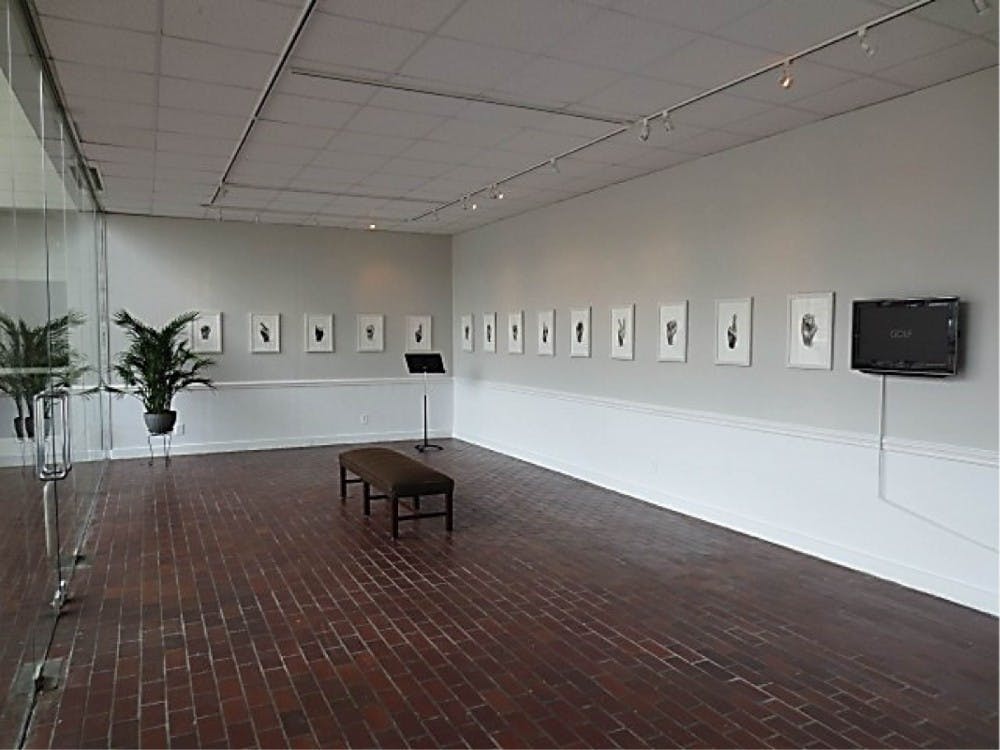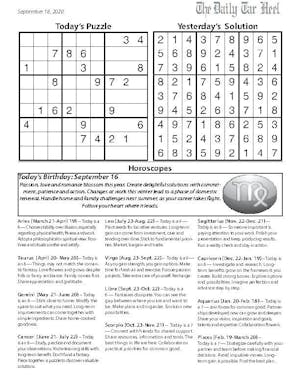Master of Fine Arts student Michael Bramwell’s exhibit in the John and June Alcott Gallery in Hanes Art Center features an art project that he said began 40 years ago. Growing up in a Protestant fundamentalist household, he came to see an ideology’s ability to prevent free expression and critical thinking. His artwork is on display as a part of the nine-week second-year MFA exhibition series.
Staff Writer Ally Levine spoke with Bramwell about his artistic process creating “Unsayable,” and the message that he wishes to communicate about ideology.
The Daily Tar Heel: How did you get started as an artist?
Michael Bramwell: I’ve been practicing art for 20 years. A lot of what I’ve learned has been on the job. I’ve always been around artists and learned the moves by watching how other artists do certain things. I would determine whether I wanted to either push that dialogue in conversation or change it to reflect more of what I wanted to say. Now, I’ve decided to come back in the academy so that I could get a more formal approach to know the things that I don’t know, and have people look at my work from a critical point of view to articulate what I’ve been doing intuitively. They can put a historical or more critical view on it. I can use that to inform my work.
DTH: What is your current artistic focus?
MB: I’m a conceptual artist. Ideas are more critical to my practice than the actual medium that I use. I use a number of mediums: performance art, painting, and video. The central theme that runs throughout the work is that the ideas take precedent over the form. That’s the basis of conceptual art. With this exhibition, you see color paintings and video. In another setting, you may see performance. So it just really depends on how ideas lend themselves to a particular medium.
DTH: Why is your exhibit in the Alcott gallery entitled “Unsayable”?
MB: The unsayable is a concept by the Austrian philosopher Ludwig Wittgenstein — used as a point of departure for this exhibition. I think what he was getting at was that there are certain things that cannot be spoken about with language, like ethics and aesthetic value. So, I use that concept as a point of departure for talking about the words in our American lexicon that have been silenced, become unsayable, under the guides of political correctness. If you do say them, there is this social stigma, social pressure to be silent. The forces that tell us not to say these words are ideological forces. They tell us what to think, what not to think, what to say, what not to say. This exhibition was a way of critiquing that ideological authority that tries to make certain language unsayable.
DTH: When did you first start thinking about the oppressive nature of ideologies?
MB: This exhibition is 40 years in the making. I was raised in a Protestant fundamentalist household. Essentially, what that meant is you had to think a certain way, believe a certain way, if you didn’t, that was cause for shunning you, that was cause for divine retribution. I was really sensitized to this idea of ideology. In this case it was religious ideology, but it can be political as well. They make people think and act in certain ways and make them conform. I’ve been thinking about that all of my life and how that concept of ideology plays out in so many different ways. There are so many negative Consequences when people don’t think for themselves and take self-determination seriously. They just follow any ideology that may come about. With this exhibition, I want to explore the cultural authority that would tell us what to think, what to say. That’s the core of this particular work.
DTH: Can you elaborate on the hand symbols represented in your watercolor paintings?
MB: Each symbol represents a symbol in the English alphabet. The actual hands are of anonymous people in various malls throughout North Carolina. I would go to the mall on Saturday and ask people to duplicate a sign that I would show them. Each person would duplicate that, and I’d take a photo of it. I’d come back to the studio and paint the picture. I wanted random everyday people because I wanted to duplicate the idea of ideology, of people who were willing to make certain signs not knowing exactly what they were doing. They just went along with my request. This is exactly the kind of thing that ideology does. It asks us to go along with a belief. Most do without understanding the deeper implications.
arts@dailytarheel.com
To get the day's news and headlines in your inbox each morning, sign up for our email newsletters.




